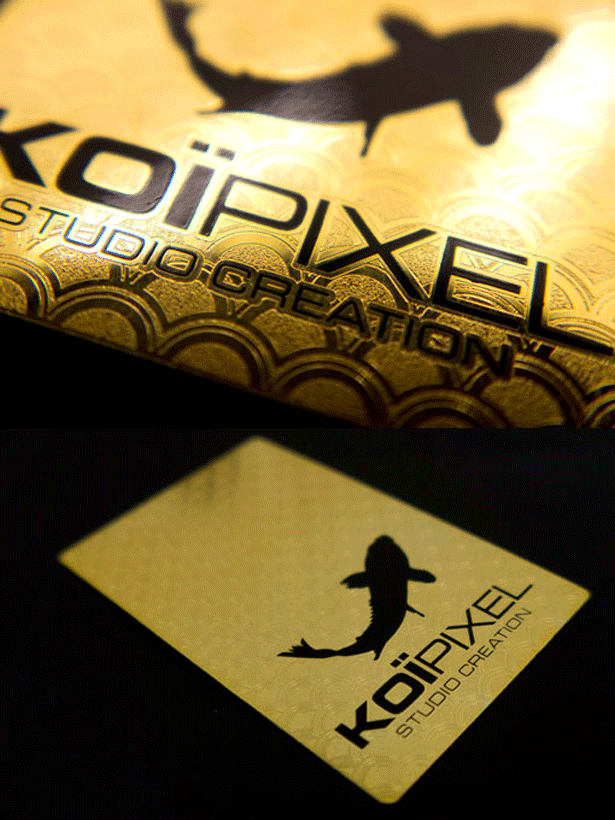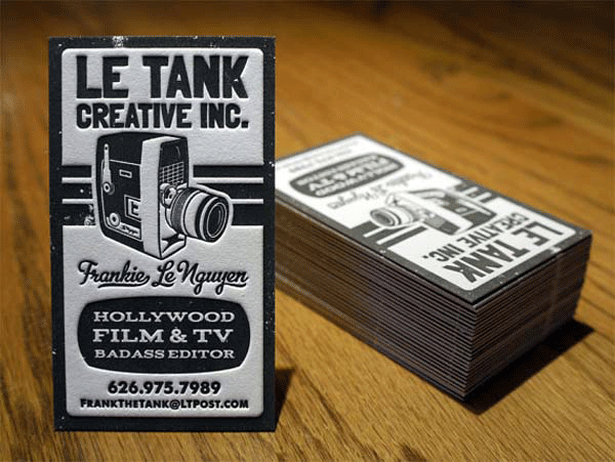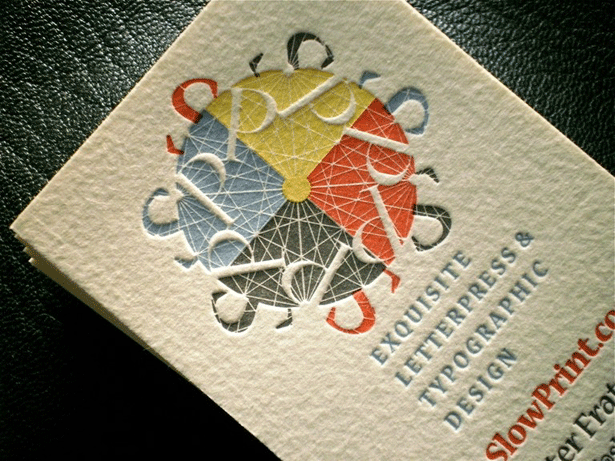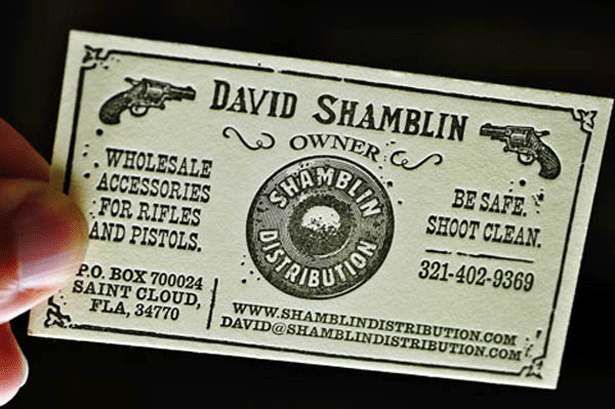 The discussion has raged for quite some time – is the traditional business card dead? Do people, in the age of the web and technology still need to kill trees (or use ores and petroleum by-products) for a silly little piece of card stock to hand out at events or when meeting someone else?
The first argument I had heard on the subject was at a new media group in New York where the speaker insisted that, with web sites and the ubiquitous “about me” section, why would anyone need a printed business card? Being the curious sort I am—some may say the pain-in-the-rear—I had to raise my hand and ask, “but how do people remember our URL without that little slip of paper?”
There was no answer as I remember—just some mumbling and hurt feelings. Several people commented to me later that I was right. People weren’t about to remember names and URLs, so what was the answer to raging technology and a paperless society?
The discussion has raged for quite some time – is the traditional business card dead? Do people, in the age of the web and technology still need to kill trees (or use ores and petroleum by-products) for a silly little piece of card stock to hand out at events or when meeting someone else?
The first argument I had heard on the subject was at a new media group in New York where the speaker insisted that, with web sites and the ubiquitous “about me” section, why would anyone need a printed business card? Being the curious sort I am—some may say the pain-in-the-rear—I had to raise my hand and ask, “but how do people remember our URL without that little slip of paper?”
There was no answer as I remember—just some mumbling and hurt feelings. Several people commented to me later that I was right. People weren’t about to remember names and URLs, so what was the answer to raging technology and a paperless society?
Business cards are an art form
There’s nothing as fun as seeing how far people can push the innovation of the standard-sized business card. Die cuts, process foils, and thermography, folds, pop-ups, and other great ideas lead to collections by individuals and printed collections of the “best business cards.” Here’s some links to blogs showcasing numerous innovative business cards:
100 (really) creative business cards
30 creative QR business cards
You the designer
Business Insider
Inspirationfeed
Artatm
Naldz Graphics
Toxel
Letterpress has been very hot for business cards for the past few years. Pixelclouds.com has recently posted a collection of Letterpress cards on their blog.
Here’s some links to blogs showcasing numerous innovative business cards:
100 (really) creative business cards
30 creative QR business cards
You the designer
Business Insider
Inspirationfeed
Artatm
Naldz Graphics
Toxel
Letterpress has been very hot for business cards for the past few years. Pixelclouds.com has recently posted a collection of Letterpress cards on their blog.


 More examples can be found on carddsgn.com as well as exquisiteletterpress.com.
A great business card is sometimes just in the name, too! When I was first hired onto the staff of MAD Magazine, my cards were much sought-after by people. Luckily, I had several boxes printed before leaving that job and still get requests for my card. At one Phoenix restaurant, known for snipping off the ties of those who dare dress too formally, then attaching the person's business card before tacking the tie stub to the wall or ceiling – giving the illusion of waves of a wheat field from slight breezes – I decided to wear a tie with my T-shirt, just so I could join the collection. When the waiter snipped off my tie, he asked for my business card. Upon handing him my MAD card, he ran off and returned with the owner who shook my hand and told me my tie and card were going into his personal collection of celebrity’s ties. Try that with a web site!
I recently sold one of my William M. Gaines business cards on Ebay. When I was a young teenager, I visited the offices of MAD and got to meet the legendary publisher of the beloved magazine (or is that the other way around?) and while sitting at his desk with him, he used a couple of his business cards to pick the pastrami from between his teeth (I assume he had a pastrami sandwich for lunch that day but one never knows) and said, “here, kid…my card!”
That DNA-stained card went for quite a bit on Ebay. Again—the power of the printed card…and toothpick.
More examples can be found on carddsgn.com as well as exquisiteletterpress.com.
A great business card is sometimes just in the name, too! When I was first hired onto the staff of MAD Magazine, my cards were much sought-after by people. Luckily, I had several boxes printed before leaving that job and still get requests for my card. At one Phoenix restaurant, known for snipping off the ties of those who dare dress too formally, then attaching the person's business card before tacking the tie stub to the wall or ceiling – giving the illusion of waves of a wheat field from slight breezes – I decided to wear a tie with my T-shirt, just so I could join the collection. When the waiter snipped off my tie, he asked for my business card. Upon handing him my MAD card, he ran off and returned with the owner who shook my hand and told me my tie and card were going into his personal collection of celebrity’s ties. Try that with a web site!
I recently sold one of my William M. Gaines business cards on Ebay. When I was a young teenager, I visited the offices of MAD and got to meet the legendary publisher of the beloved magazine (or is that the other way around?) and while sitting at his desk with him, he used a couple of his business cards to pick the pastrami from between his teeth (I assume he had a pastrami sandwich for lunch that day but one never knows) and said, “here, kid…my card!”
That DNA-stained card went for quite a bit on Ebay. Again—the power of the printed card…and toothpick.
The card as a selling tool
Handing someone a business card is the first marketing effort you take with them, aside from looking them in the eye and a firm handshake. The Japanese, for example, put great reverence into their business cards. It is their personality and must be treated with the utmost respect. Many years ago, when I was to meet with the largest conglomerate in Japan, I received some cautionary advice from my sister, who had studied international relations, about my first few moments in my meeting. It wasn’t just bowing but also how to accept a card with both hands, holding it with reverence at the corners, which pocket to place it in (never the back pocket!) and how to give out my business card. It was, it seems, very beneficial to know the proper card etiquette as well as just good manners and business acumen. In another situation, I was quite embarrassed when at a design event, a well-known nutcase and dilettante made a point of shoving her card into the hands of everyone at the event. When she arrived at the small group with which I was standing, I took her card, wiped my rear end and threw it on the floor, thinking she didn’t see what I was doing. After the laughter from others in the group died down, I was told that the crazy-lady had seen me do it and I was embarrassed by my callousness. I should have waited until she had left the room to do it. In another article on creatives in social situations, I wrote that a business card didn’t necessarily have to be a standard size. While I advise against a full letterhead-sized printed piece, because people will need to carry the damn thing in their hand all night, wiping with it later, there is no reason that a piece cannot be large enough to show a sample of your work and still fit into a pocket or purse. I had also suggested that one could create a set of “flash cards” that showed several pieces. Many years ago I had a set of business cards that had fifty different images on them. Even though I attended the same networking groups repeatedly, my cards were known as the “collect ‘em all” cards and were always welcomed when I would hand my card out, even to those who had received one numerous times before. The key is to have a card people will keep and perhaps show to others. Having a card that sits on someone’s desk of tacked to a bulletin board in plain sight is the biggest compliment since not wiping a rear end with one.The digital answer
Giving credit where credit is due, a nice collection of digital apps appears on a recent post on webdistortion.com—“6 apps that are killing the business card.” The list is short and doesn’t cover ALL of the sites that can be used for further information about you and truthfully, they may not be the best but here they are for your information and inspiration. Aboutme Flavors.me Identyme.com Bu.mp Shhmooze Missing from the Web Distortion blog entry are sites like LinkedIn, which is for business networking and allows you not only to post your résumé, recommendations from others, join groups, and network but the ever increasing amount of widgets allows you to insert Behance portfolios, slide shows, videos, Twitter and blog feeds, and much more. Another interesting site that was about to go under but was bought by another company at the last minute is visualcv.com. This site allows you to post your résumé and portfolio samples, then share the profile with others or download the whole thing as a PDF for emailing. Twtbizcard has a unique Twitter app for sharing information. Check out the video on their site. Poken, for those who aren’t embarrassed to carry cute little plastic creatures to networking events and business meetings, is another bump technology gadget. It hasn’t caught on in the United States…and probably won’t but why not click the link and check it out, if for nothing else, a laugh. Of course, using a QR Code on a printed card can take people to any of these sites or a video such as this one: Whatever you use, printed or digital, the most important thing to keep in mind, is to make people remember you, connect and become a valued client. The best way to do that is to make sure your information is clear, concise and easy to find.Speider Schneider
Speider Schneider is a former member of The Usual Gang of Idiots at MAD Magazine and has designed products for Disney/Pixar, Warner Bros., Harley-Davidson, ESPN, Mattel, DC and Marvel Comics, Cartoon Network and Nickelodeon among other notable companies. Speider is a former member of the board for the Graphic Artists Guild, co-chair of the GAG Professional Practices Committee and a former board member of the Society of Illustrators. Follow him on Twitter @speider or add him on Google+
Read Next
20 Best New Websites, April 2024
Welcome to our sites of the month for April. With some websites, the details make all the difference, while in others,…
Exciting New Tools for Designers, April 2024
Welcome to our April tools collection. There are no practical jokes here, just practical gadgets, services, and apps to…
14 Top UX Tools for Designers in 2024
User Experience (UX) is one of the most important fields of design, so it should come as no surprise that there are a…
By Simon Sterne
What Negative Effects Does a Bad Website Design Have On My Business?
Consumer expectations for a responsive, immersive, and visually appealing website experience have never been higher. In…
10+ Best Resources & Tools for Web Designers (2024 update)
Is searching for the best web design tools to suit your needs akin to having a recurring bad dream? Does each…
By WDD Staff
3 Essential Design Trends, April 2024
Ready to jump into some amazing new design ideas for Spring? Our roundup has everything from UX to color trends…
How to Plan Your First Successful Website
Planning a new website can be exciting and — if you’re anything like me — a little daunting. Whether you’re an…
By Simon Sterne
15 Best New Fonts, March 2024
Welcome to March’s edition of our roundup of the best new fonts for designers. This month’s compilation includes…
By Ben Moss
LimeWire Developer APIs Herald a New Era of AI Integration
Generative AI is a fascinating technology. Far from the design killer some people feared, it is an empowering and…
By WDD Staff
20 Best New Websites, March 2024
Welcome to our pick of sites for March. This month’s collection tends towards the simple and clean, which goes to show…
Exciting New Tools for Designers, March 2024
The fast-paced world of design never stops turning, and staying ahead of the curve is essential for creatives. As…
Web Tech Trends to Watch in 2024 and Beyond
It hardly seems possible given the radical transformations we’ve seen over the last few decades, but the web design…
By Louise North
















